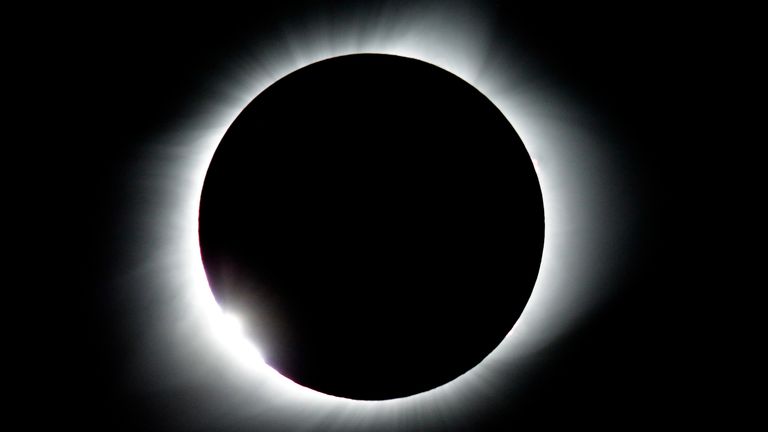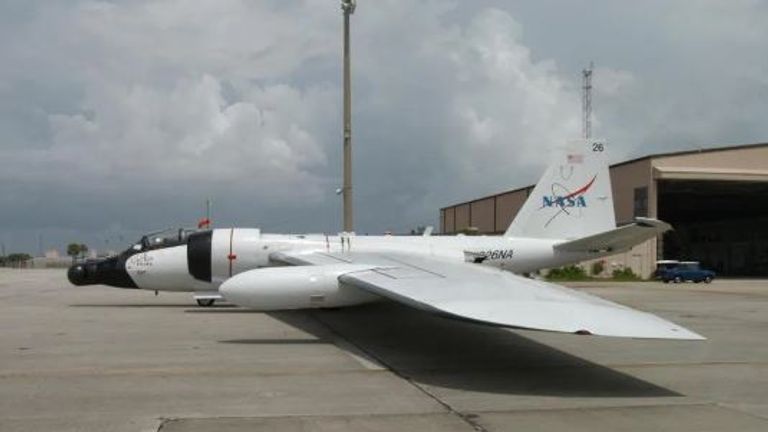Scientists are gearing up for next week’s total solar eclipse – but what will they be hoping to learn as parts of the Earth temporarily fall dark?
NASA‘s deputy chief Pam Melroy says it will give an “entirely different” opportunity to study the interaction between the Earth, moon and sun.
The US space agency and others will focus much of their work on observing the corona, the sun’s outer atmosphere.
It can’t normally be seen because the sun is too bright, but during an eclipse the corona’s white halo can be seen bursting out from behind the shadow.
The corona is hundreds of times hotter than the sun’s surface and reaches far out in space.
It’s the source of the solar wind – a flow of charged particles that can sometimes knock out power grids on Earth and affect communication networks.
“In terms of the value of total eclipses, science still cannot explain how the corona is heated to such extreme temperatures,” says retired NASA astrophysicist and eclipse expert Fred Espenak.
Scientists will be hoping to get more data on this enigma, as well as answers to other questions – such as how fast the particles are moving when they are flung out into space.
NASA WB-57 high-altitude research planes will ascend as high as 50,000ft (9.5 miles) to conduct a series of experiments.
Read more:
Total solar eclipse: Can I see it in the UK and why is this one unique?
One aircraft will use a camera that can photograph in both infrared and visible light to try to identify new details in the middle and lower corona.
The space agency says it hopes the pictures will also help study a dust ring around the sun and also search for asteroids orbiting nearby.
“Dust sounds boring,” said NASA’s eclipse programme manager Kelly Korreck.
“But at the same time, dust is actually really interesting. Those are the leftover remnants from when the solar system was forming.”
Another plane will use a spectrometer to study light from the corona, hopefully learning more about the temperature and chemical composition of the corona and the particles it emits.
Hundreds of citizen scientists are also expected to get involved in Monday’s eclipse.
They are set to observe things like the quietening of birds and other wildlife, the dip in temperature as the sun is blocked, and what effect there is on communications.
Hundreds of weather balloons will also be released by US university students to monitor atmospheric changes.
The eclipse will last about four and a half minutes, with more than 30 million people in the US, Mexico and Canada experiencing darkness in the path of totality.
Huge numbers of people are expected to turn out for the spectacle in some areas.
The Niagra region in Canada, near the famous waterfall, has declared a state of emergency amid predictions that a million people could show up.



